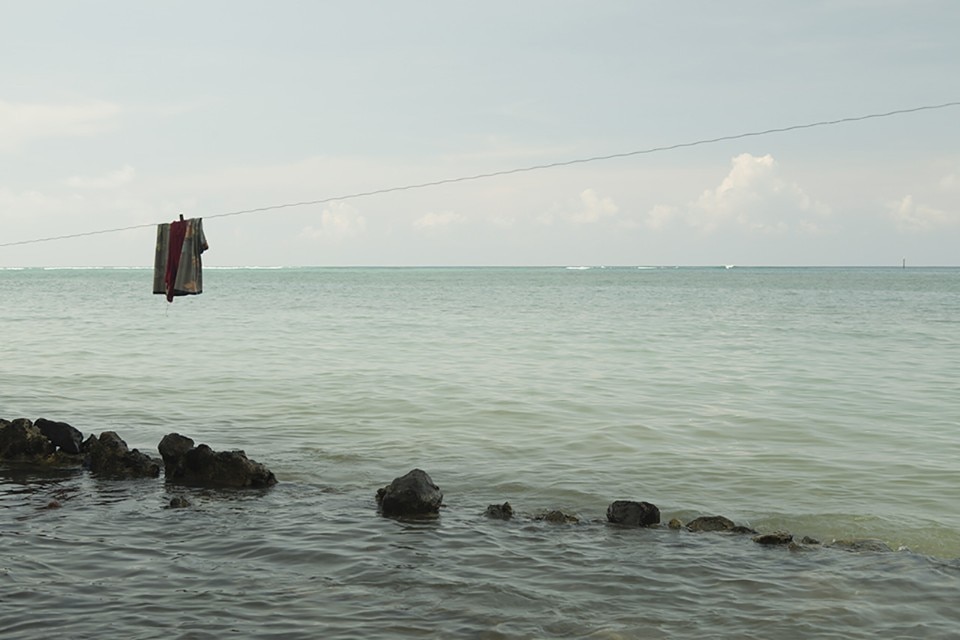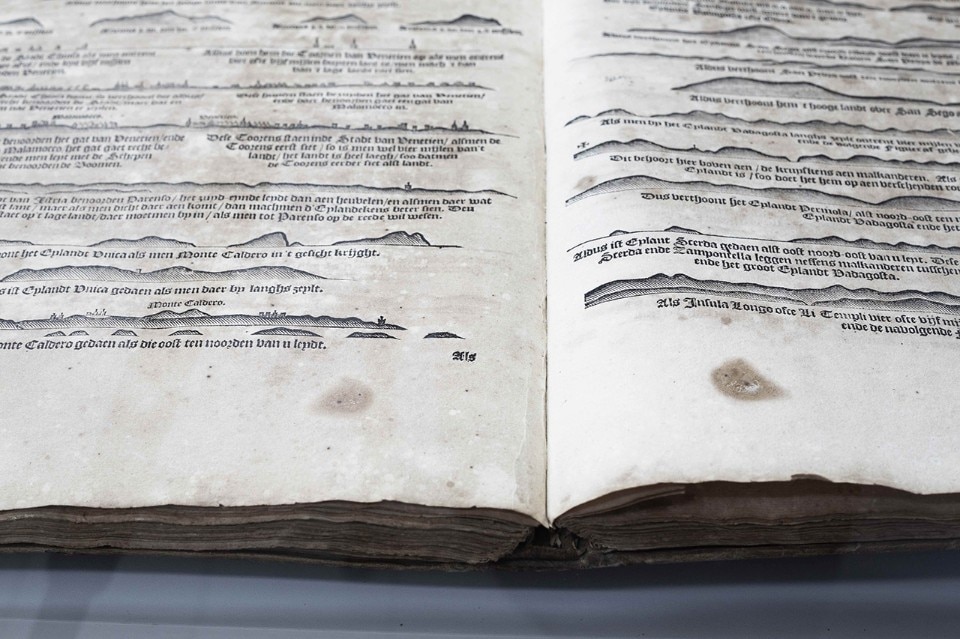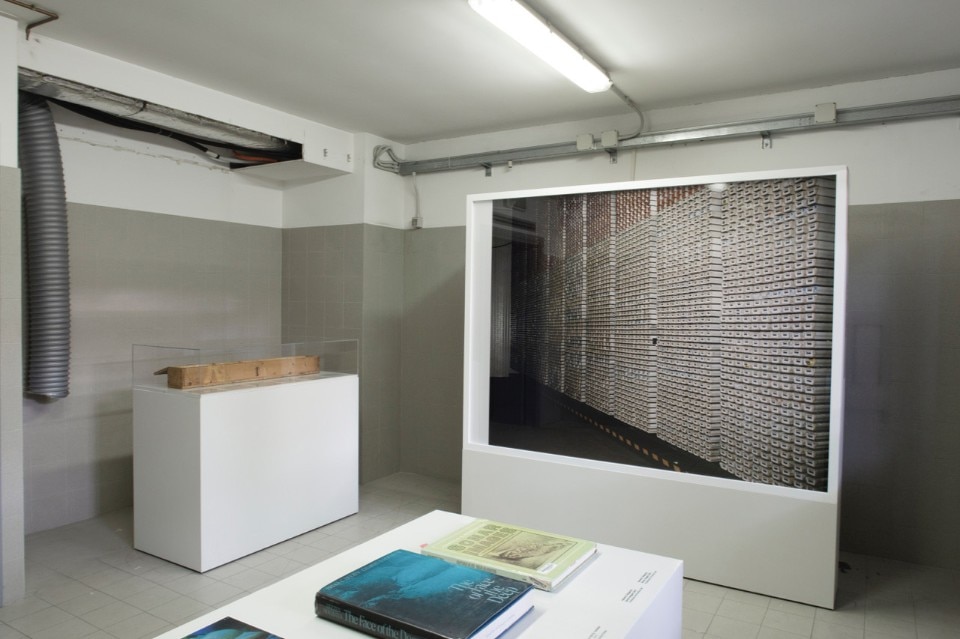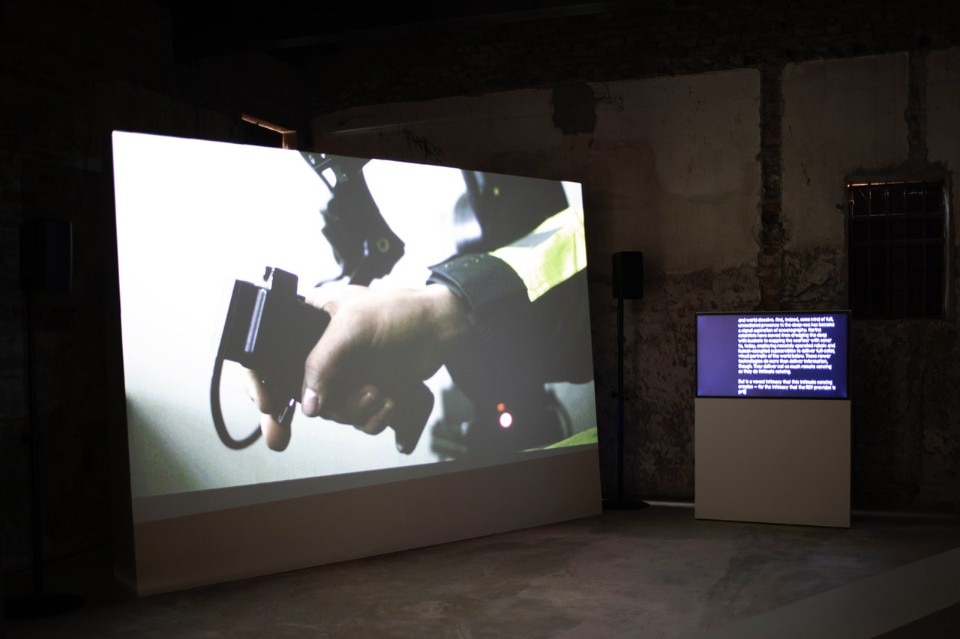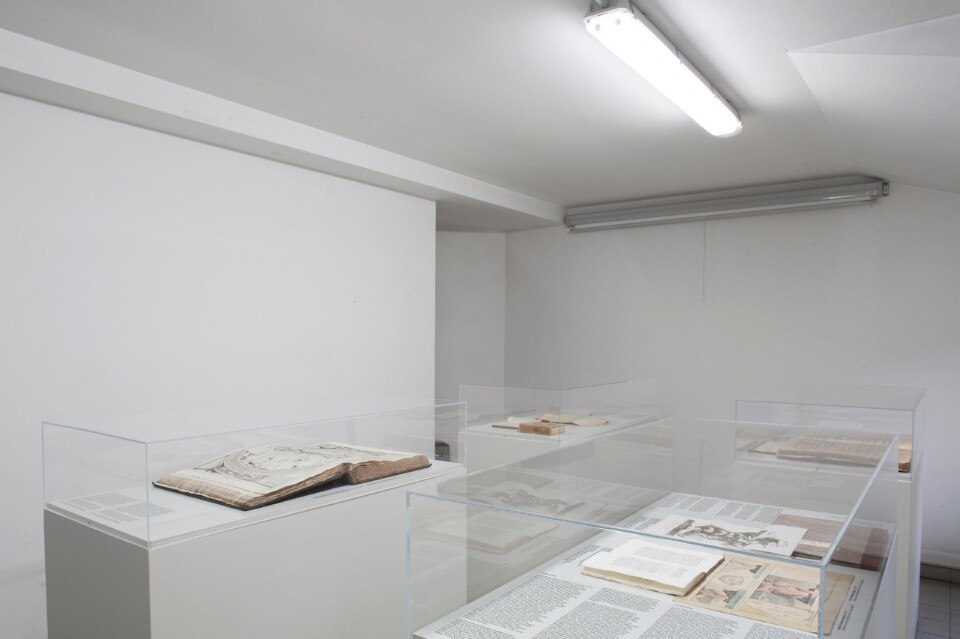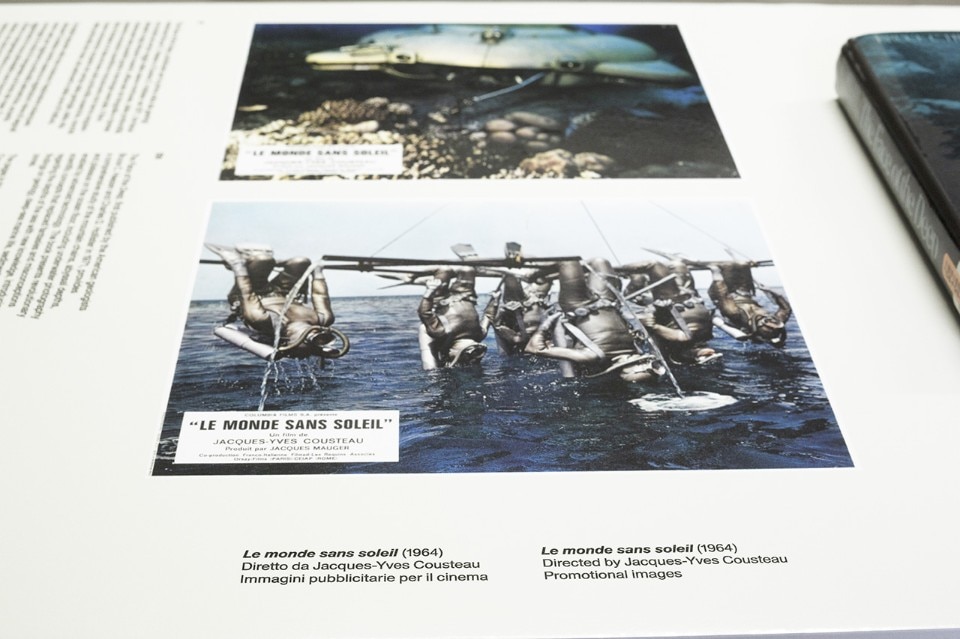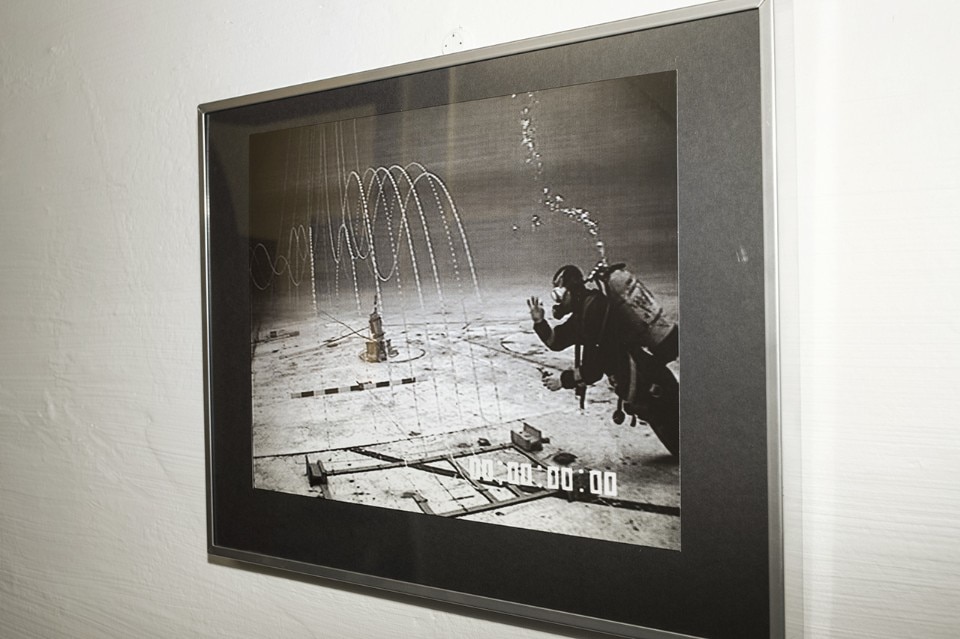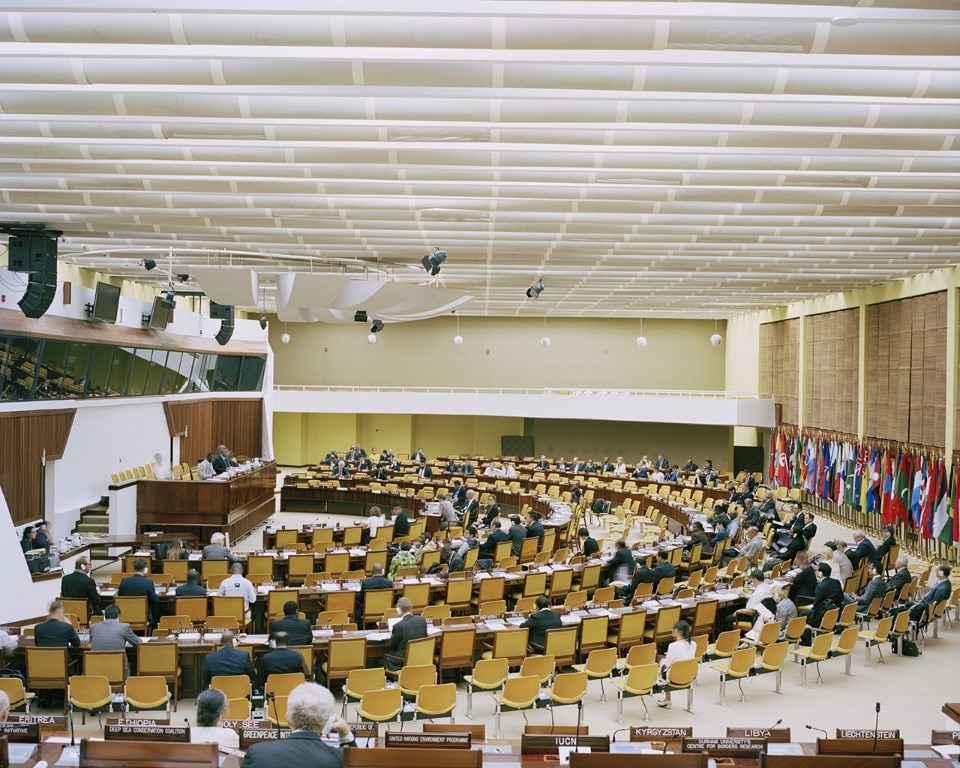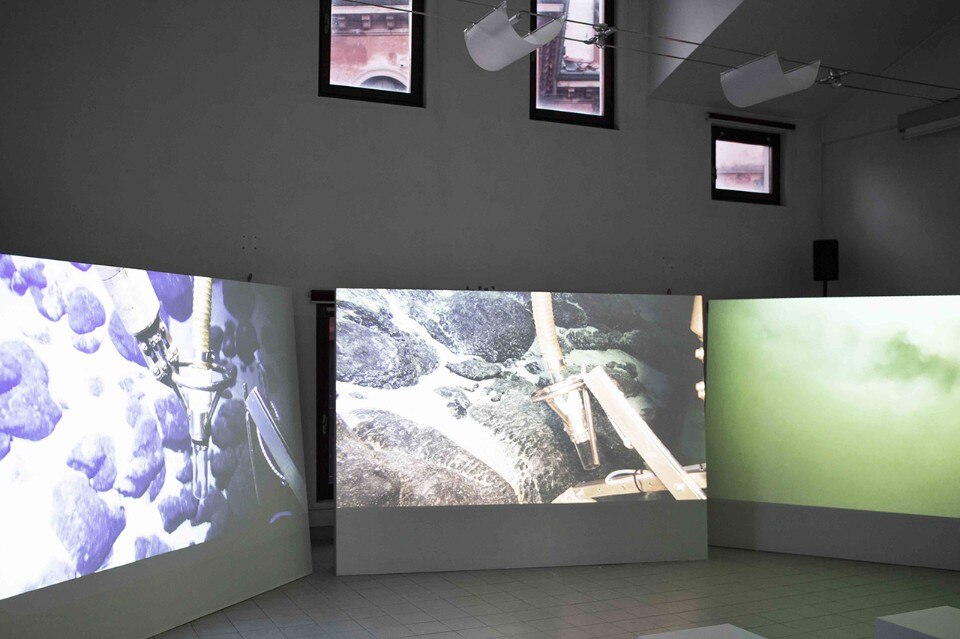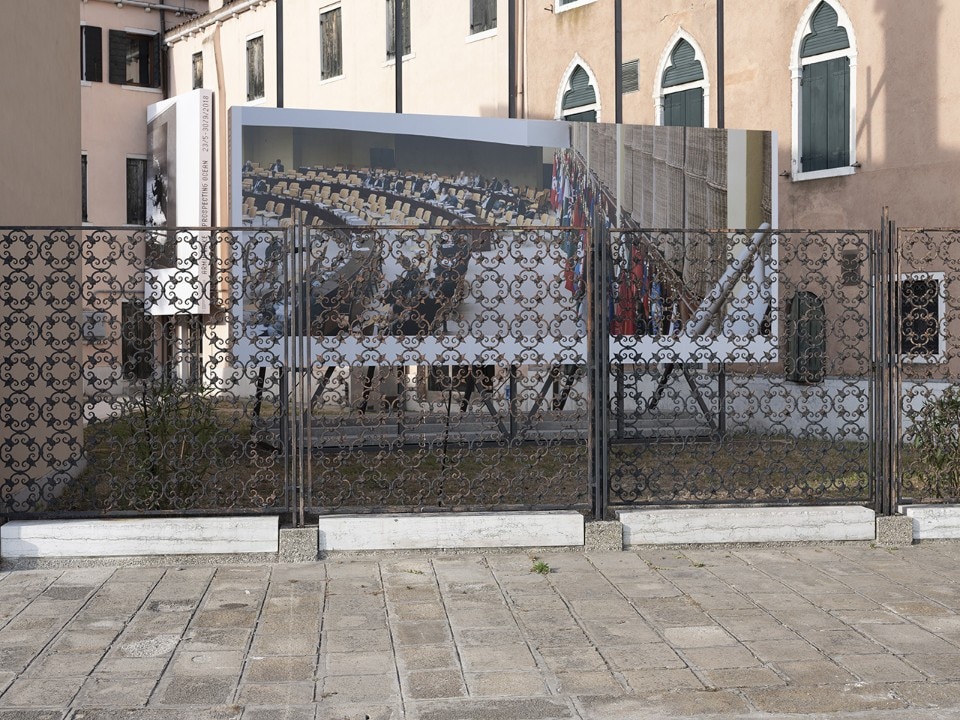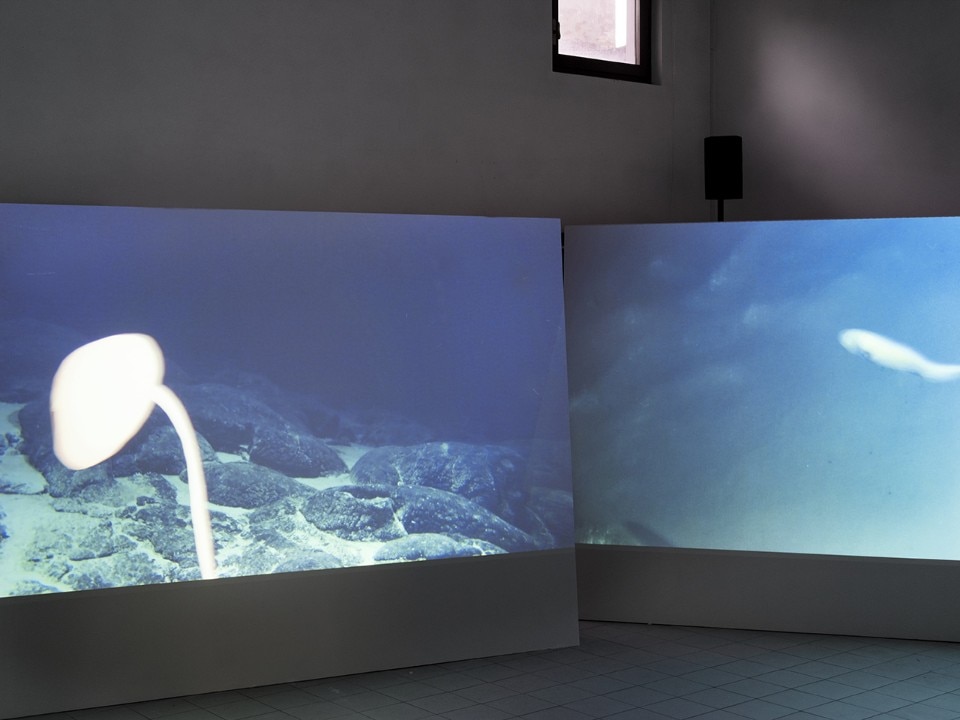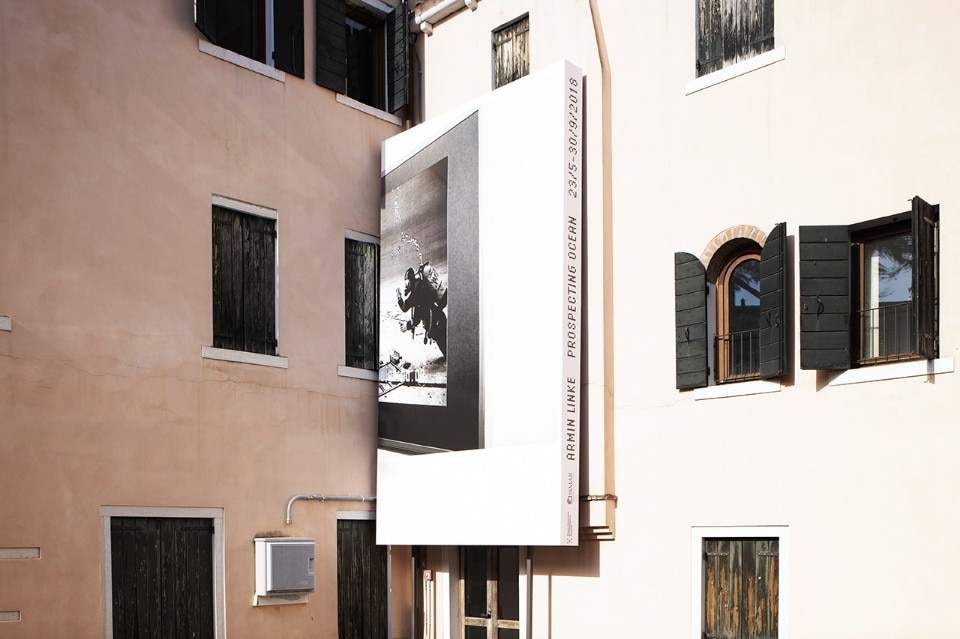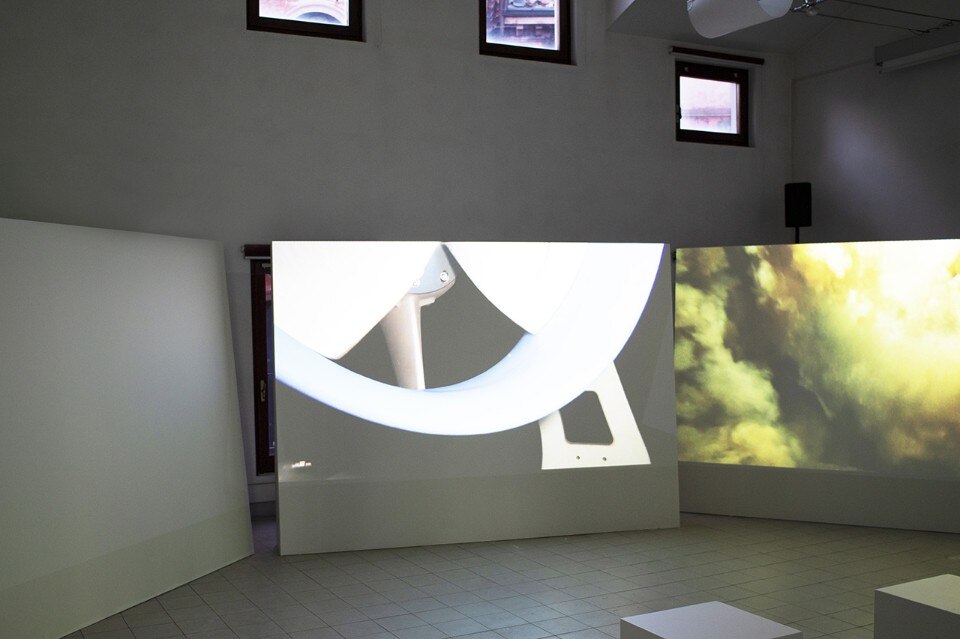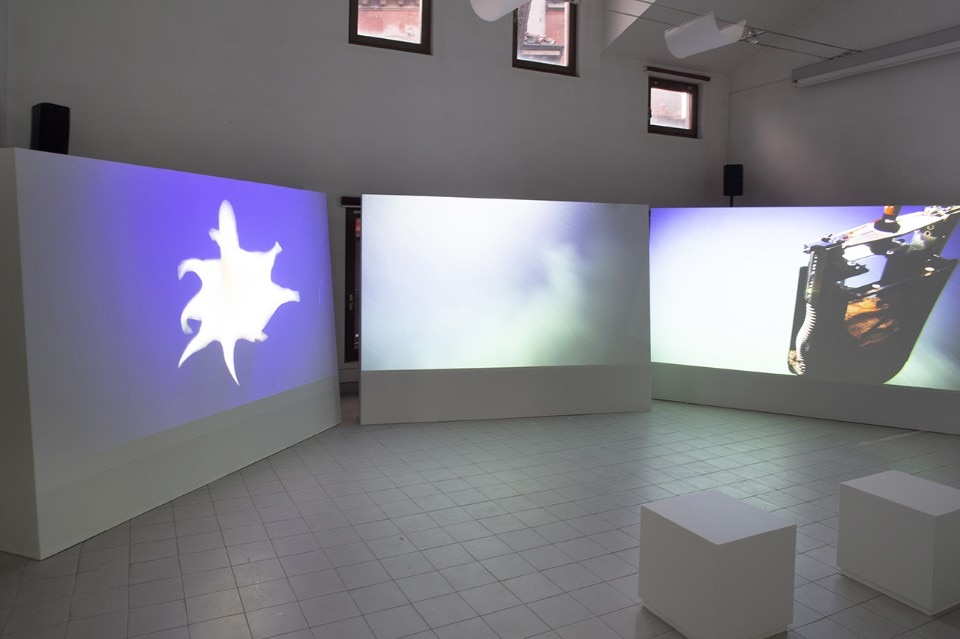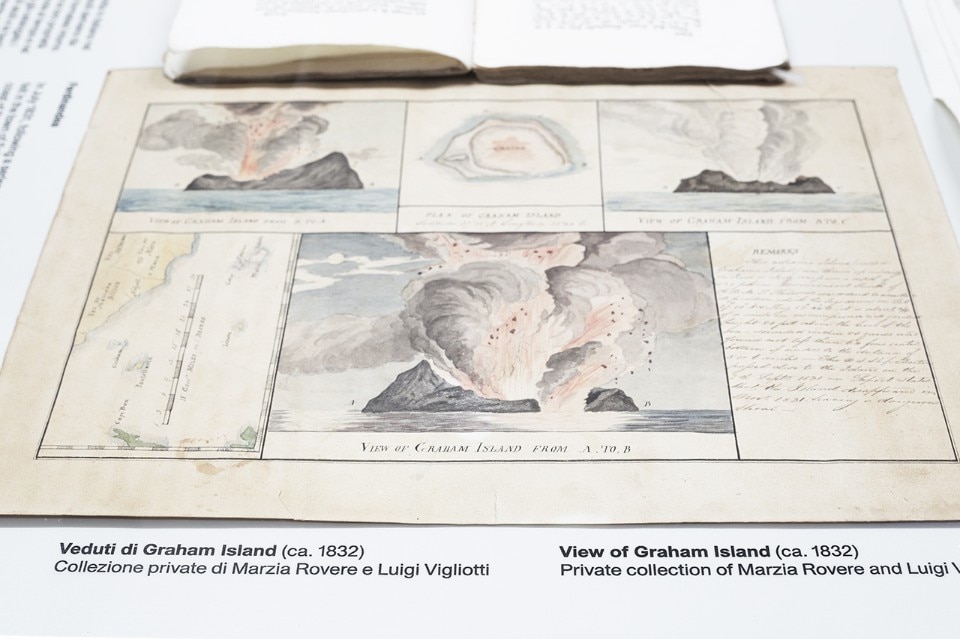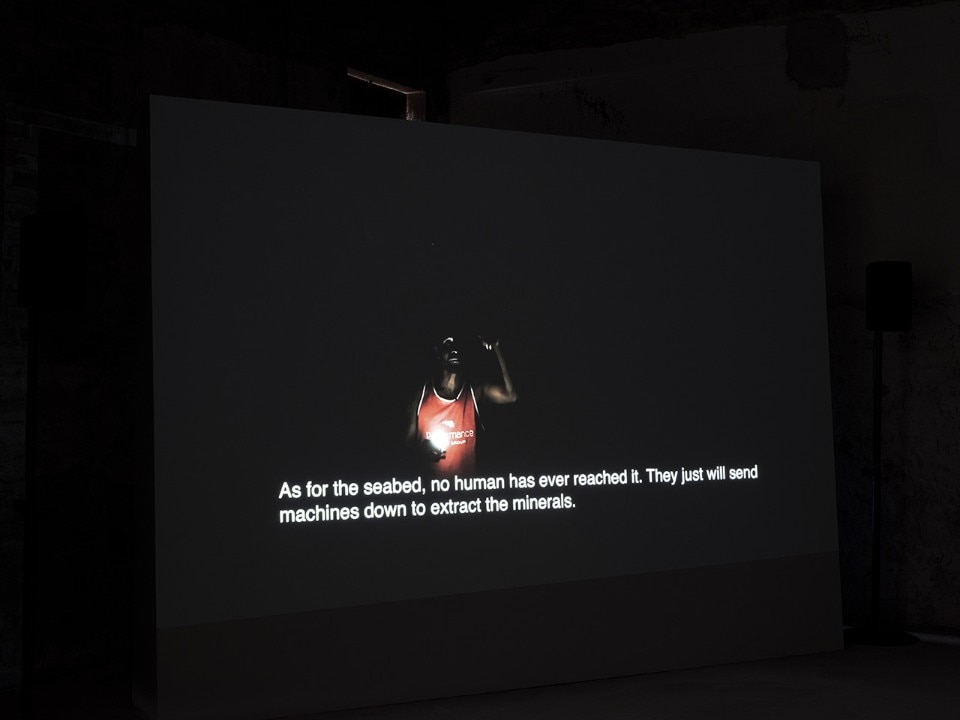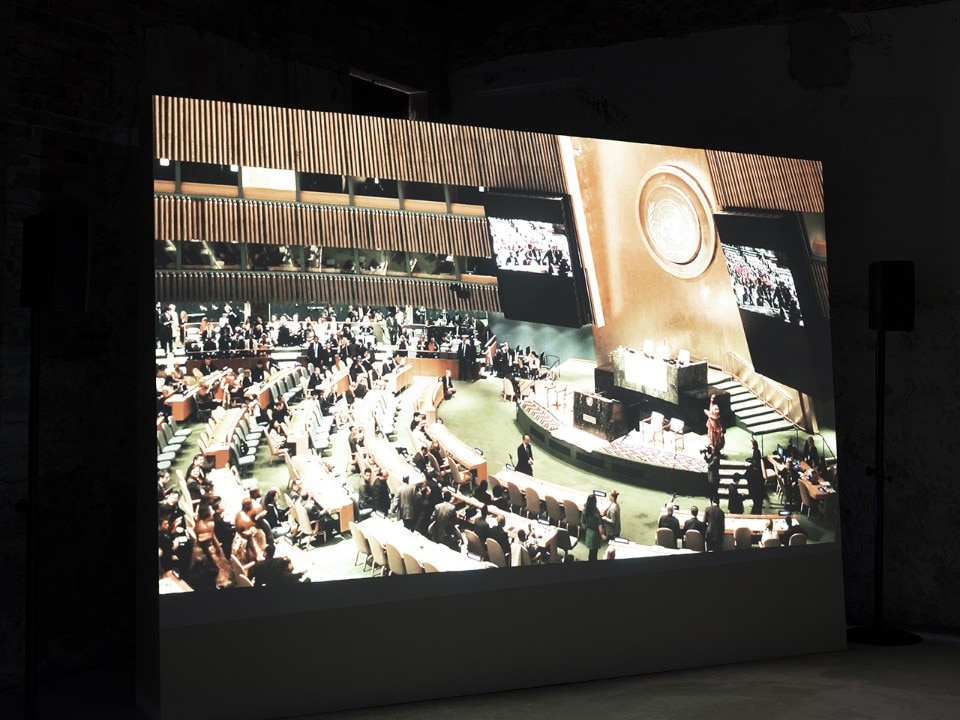Generated within the broader framework of his ongoing observation of the Anthropocene (the age of humans), “Prospecting Ocean” is Armin Linke's most recent endeavour, involving three years and three expeditions to the Pacific Ocean. TBA21 Academy, founded in Vienna in 2011 to raise awareness of the condition of our seas, commissioned and produced this exhibition in collaboration with the Institute of Marine Sciences under Italy's National Research Council. The show's curator is Stefanie Hessler.
Born in Milan in 1966, Linke is a photographer and film maker living in Berlin. Employing in-depth, multidisciplinary exploration of our technological culture and scientific advancement, his work analyses the transformation of the environment.
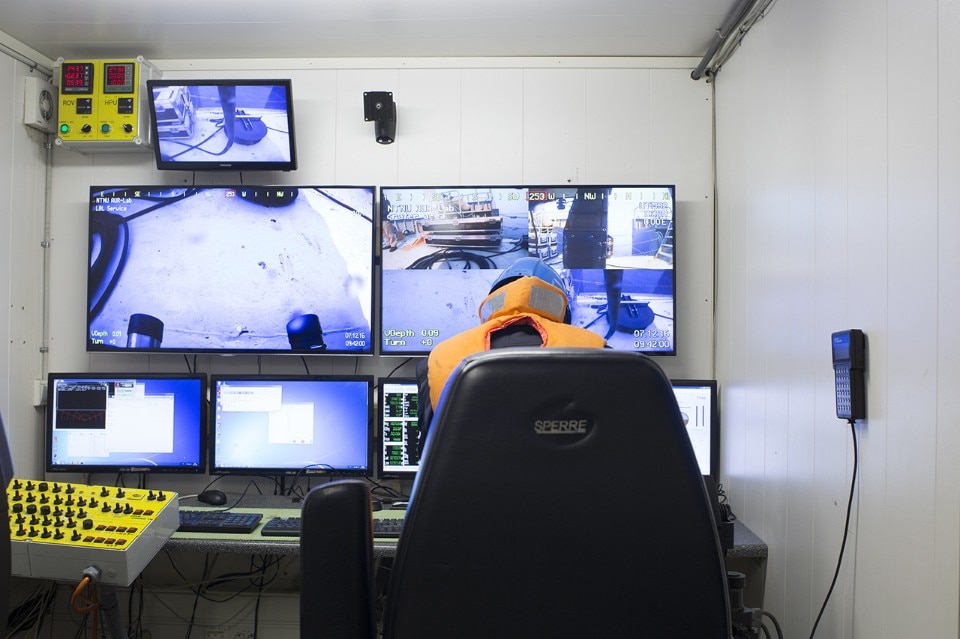
Coherent with his method, he has conducted this project as a shared road, a collaboration with other professionals thanks to whom he made an enquiry into the health of the oceans, with a particular focus on the ocean floor. Remote-controlled underwater vehicles took pictures at depths of up to 5.000 metres, documenting the impact of our exploitation of the Earth's resources.
Linke operates like a scientist, scrutinising multiple and diverse sources of information. The display in Venice includes archive photographs and films belonging to the Ismar Institute of Marine Sciences, video installations, new photos, and interviews with scientists, biologists, geologists, politicians and lawyers – people who are instrumental to the ocean's destiny or actively imagining and determining its future.
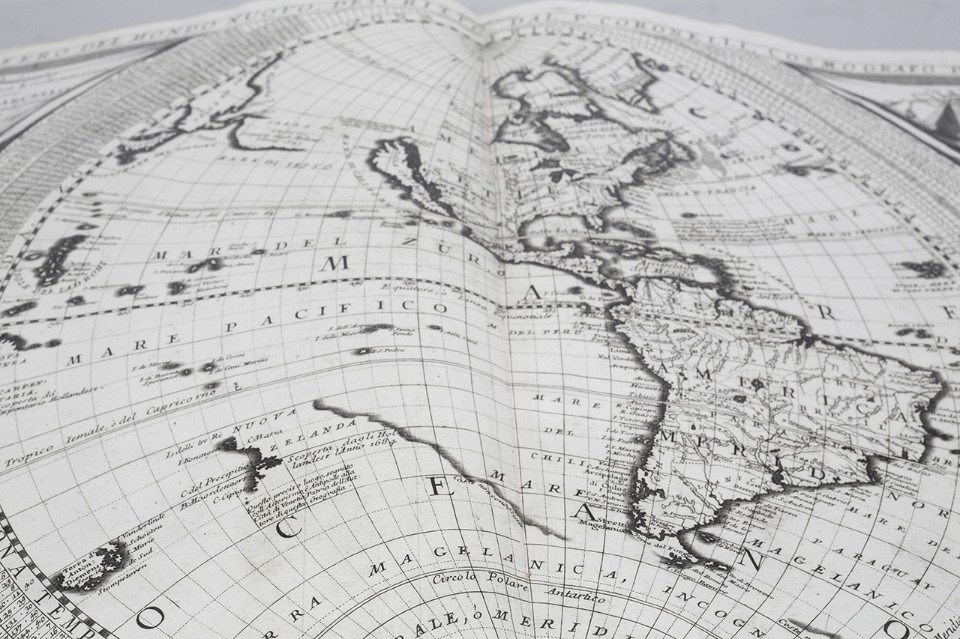
“Prospecting Oceans” aims to make us understand exactly what the consequences are of the current political management of the seas and their exploitation by economic activities in the maritime sector.
The exhibition is hosted at the historical headquarters of the Ismar Institute of Marine Sciences in Venice, with a display designed by the architects Kuehn Malvezzi. Lectures organised by Territorial Agency, an independent bureau that promotes sustainable transformations of the landscape, will take place periodically at this location throughout the show's duration.
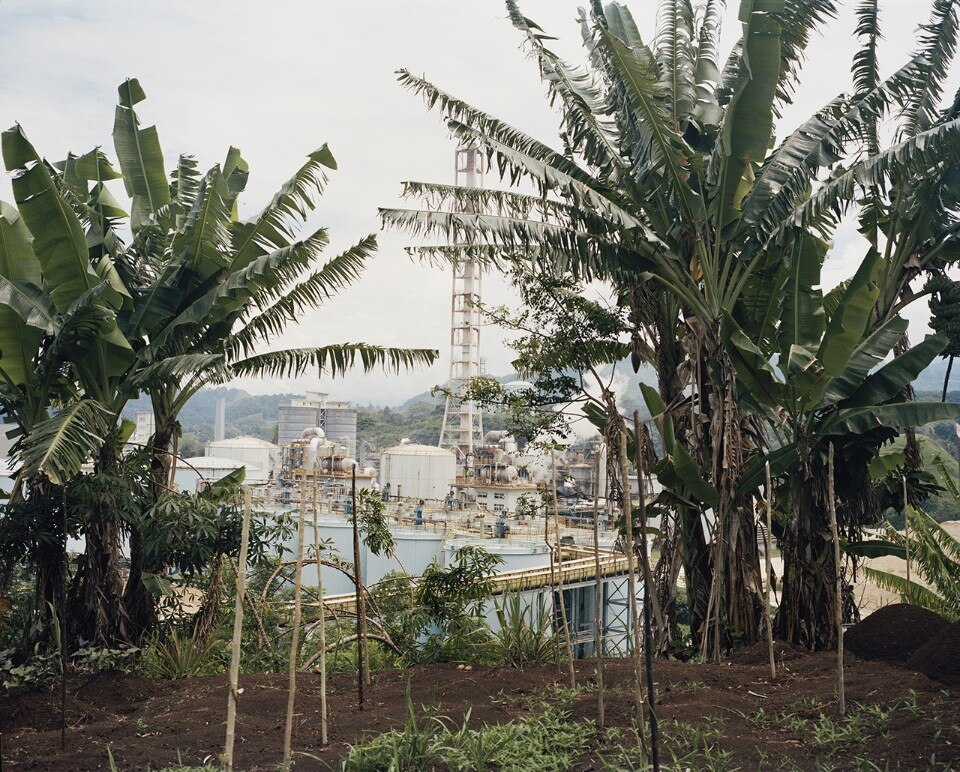
You worked on “Prospecting Ocean” for three years. How did it start and how did it develop?
It began with an invitation from the foundation Thyssen-Bornemisza Art Contemporary, whose TBA21 Academy brings together artists, researchers and thinkers. Here, the aim was to investigate the oceans' health. The first trip was to Papua New Guinea with the curator Ute Meta Bauer. The results of this expedition were presented in Kingston, Jamaica. There, Davor Vidas, a research professor in international law and a member of the Anthropocene Working Group (a group of scientists dedicated to analysing the technological saturation of our planet), introduced me to the International Seabed Authority, which organises, regulates and controls all mineral-related activities in the international seabed area that are beyond the limits of national jurisdiction. Visiting its headquarters in Kingston, I gained insight into how the ocean's resources are managed both in national and international waters, and how legislation has developed for the mining of the seabed.
As a basis for the exhibition, I took “Anthropocene Observatory”, an installation I created in 2013-2014 with Anselm Franke, John Palmesino and Ann-Sofi Rönnskog. It was produced by Haus der Kulturen der Welt in Berlin. I proposed that TBA21 Academy develop a project with the same themes, trying to understand how scientific institutions, legal agencies and local activists operate, and what stances they adopt. An institution I wished to collaborate with was the Ismar Institute of Marine Sciences in Venice, which made it possible to set up this exhibition precisely in its former laboratories. The spaces currently house the Institute's historical archives, while the laboratories have moved to new headquarters at the Arsenale. In the former laboratories, our subject matter, which risks coming across as abstract and distant, unites perfectly with the traces of scientific activity and the historical materials that the Institute allowed us to use. Under the curatorship of Stefanie Hessler, we asked the scientists to select elements from the archive that would connect historically to the content of the show.
It is fascinating to see how visual media have historical consequences of this type
Did anything essential that you had not considered initially arise during the process?
In my artistic practice, which consists of the visual media of photography and film, I became intrigued by visualisation techniques developed in the 1970s such as sonar, which allowed for the mapping of the ocean floors. This type of sound measurement was then translated by cartographers and bathymetrists who drew underwater topography. Subsequently, a legal structure was established. Now, nations can extend their economic territory by making a request to the United Nations. Such geopolitical requests for the colonisation of the seabed are based on images that have legal validity. It is fascinating to see how visual media have historical consequences of this type.
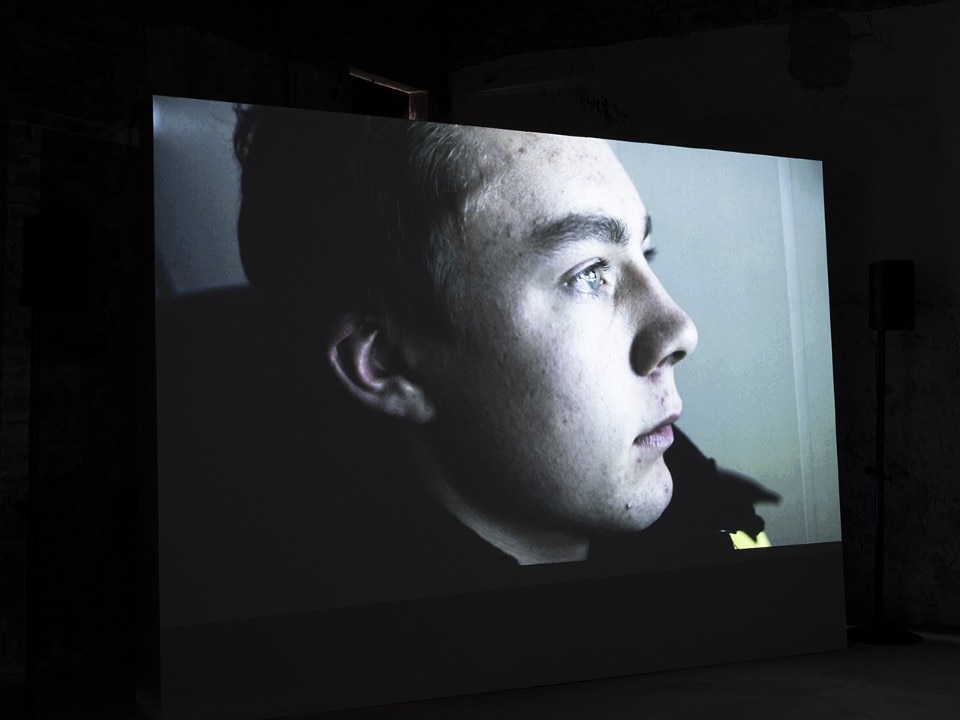
Coherent with your method, you built this work as a shared process with artists, scientists and the Institute of Marine Biology. How do you organise and manage such a complex project?
By means of dialogue. In Kingston, for instance, I met the marine geologist Matthias Haeckel and the biologist Antje Boetius, who work at German oceanographic institutes. When I visited Marum (a centre for marine research at the University of Bremen) and Geomar (the Helmholtz Centre for Ocean Research Kiel) I was given access to the video archives of research expeditions that use remote-controlled underwater vehicles. Talking to archivists and the scientists who use the videos, we selected images used by the vehicle pilots, who guide the robots over terrain up to 5.000 metres under the surface.
Employed to explore underwater volcanoes, mineral sediments and fauna, the recordings are both beautiful and functional. The pictures are spectacular, like something made by James Cameron. For the exhibition, we juxtaposed three screens of images with one screen of excerpts from the written logs kept by the scientists. Reading between the lines, it is possible to understand the geopolitical agendas of each expedition. For me, it was a fascinating opportunity to talk to institutions and scientists about the cultural value of the images and how to translate their scientific character into an artistic one.
The idea was to make an exhibition that would be accessible to different types of visitors
The exhibition held in the different rooms of the historical headquarters of the Institute of Marine Sciences offers different levels of enjoyment. A printed guide orients visitors through the themes, where generous captions give an opportunity for in-depth comprehension. This is beyond the more immediate and purely visual impact of the display. How important is the hypertextual part of your work?
For this particular project, hypertext is especially important because it explains a very complex subject. The idea was to make an exhibition that would be accessible to different types of visitors. You can either enjoy it briskly and pause at the spectacular pictures, or you can read the summaries to familiarise with the subject matter, or you can study the video-taped interviews as if they were university lectures. Giulia Bruno and Giuseppe Ielasi worked on the important task of editing the videos in order to create an inner "choreography" for the material. The architectural firm Kuehn Malvezzi studied the interior design to make a sculptural interface for the exhibition.
A key decision was to make plinths instead of using the walls of the building. This way, the location itself is presented as a work of art, leaving intact the traces of the scientific activity that used to take place there. The rooms can be visited like islands. The Dutch graphic designer Linda van Deursen contributed to making the texts legible at different levels. There is a printed guide, plus a summary in each room, plus a text for each item on display.
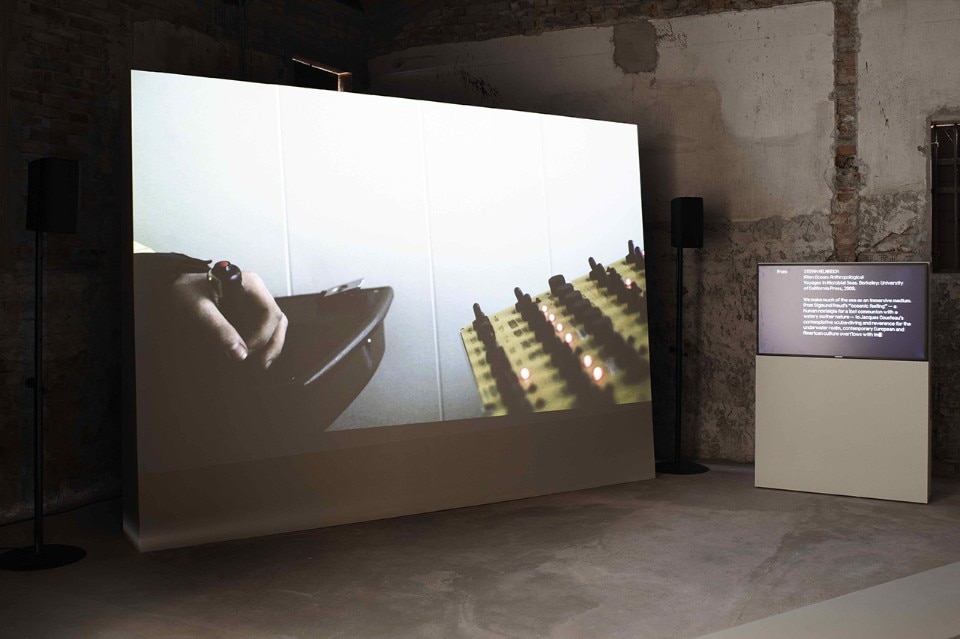
For the display, Kuehn Malvezzi interpreted the interiors, photography and videos as temporary elements. Nothing is attached to or projected onto the walls, but placed on self-standing structures, which despite their size find a perfect layout within the space. How did your collaboration come about and to what extent does their expositional design help our comprehension of “Prospecting Ocean”?
I used to teach at the Karlsruhe University of Arts and Design with Wilfried Kuehn. We were the curators of an exhibition on Carlo Mollino at the Haus der Kunst in Munich. With our students we developed the interface for the installation “Phenotypes/Limited Forms”, which has now been presented again ten years later at the Zentrum für Kunst und Medientechnologie (ZKM) in Karlsruhe for the exhibition “Open Codes”. Here, the public is invited to participate by becoming a co-curator, composing and printing a book of objects and photographs. Lars Müller Publishers has just published a book about the project.
Giulia Bruno, Giuseppe Ielasi and Renato Rinaldi are longstanding collaborators of ours. We worked on my projects “Anthropocene Observatory” and “Alpi” together. We know Linda van Deursen from a project produced by the ZKM that we presented at the Padiglione d'Arte Contemporanea in Milan, “L’apparenza di ciò che non si vede” (2016), where the idea was to have photographs and texts functioning as commentary in the space. So we had already experimented with the idea of layered reading for the content of a photo and video exhibition.
- Exhibition title:
- Prospecting Ocean
- Curator:
- Stefanie Hessler
- Opening dates:
- 23 May – 30 September 2018
- Venue:
- Istituto di Scienze Marine (CNR-ISMAR)
- Address:
- Riva dei Sette Martiri 1364, Venice


